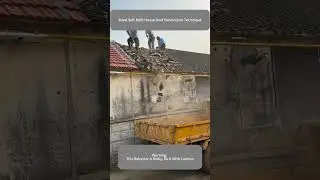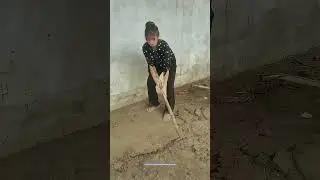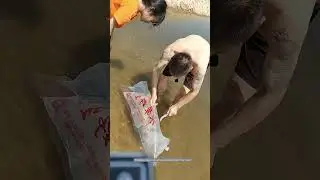Creative Way Of Planting Rice In The Plastic Buckets On The Rooftops Of Urban Buildings !
Planting Rice On The Rooftops Of Urban Buildings Can Be Carried Out From The Following Aspects :
I. Preliminary Preparations
1. Assess Roof Load-Bearing Capacity
Ask professionals to assess the load-bearing capacity of the roof to ensure that it can withstand the weight of soil, water, and human activities required for rice cultivation !
2. Do A Good Job In Waterproofing
Check the integrity of the roof waterproof layer. If there is any damage, repair it in time. Consider laying a special waterproof membrane or using root-resistant waterproof materials to prevent rice roots from damaging the roof waterproofing !
3. Choose An Appropriate Container
Select an appropriate planting container according to the roof space and planting scale, such as planting boxes, flowerpots, or building small ponds. Ensure that the container has sufficient depth and stability !
II. Soil Preparation
1. Choose Suitable Soil
Select fertile, loose, and well-drained soil. Consider using organic soil or mixed soil, such as a mixture of humus soil, garden soil, and river sand !
2. Disinfect The Soil
Disinfect the soil to kill possible germs, eggs, and weed seeds. Methods such as sunlight exposure, high-temperature cooking, or using disinfectants can be adopted !
III. Rice Variety Selection
1. Choose Varieties Suitable For Rooftop Planting
Select short-stalked, lodging-resistant, and adaptable rice varieties. At the same time, consider the growth period of the variety and choose early-maturing or mid-maturing varieties suitable for the local climate !
2. Buy high-quality seeds: Buy seeds from regular channels to ensure the quality and purity of the Seeds !
IV. Planting Process
1. Sowing
According to the local climatic conditions and the growth period of the rice variety, choose an appropriate sowing time. Sowing can be done by direct seeding or transplanting seedlings. For direct seeding, evenly scatter the seeds on the soil surface and then gently cover with a thin layer of soil; for transplanting seedlings, first raise seedlings in seedling trays and then transplant them into rooftop planting containers when the seedlings grow to a certain height !
2. Watering
Rice growth requires sufficient water, but excessive watering should be avoided to prevent waterlogging. Water according to soil moisture and weather conditions to keep the soil moist !
3. Fertilization
During rice growth, appropriate fertilization is needed to ensure normal growth. Organic fertilizers or compound fertilizers can be selected and fertilized according to the instructions. Pay attention to avoiding excessive fertilization to prevent environmental pollution !
4. Control
Regularly check the growth of rice and detect and control pests and diseases in time. Biological control, physical control, or low-toxicity pesticide control methods can be adopted !
V. Daily Management
1. Weeding
Remove weeds in the planting container in time to prevent them from competing with rice for nutrients and water !
2. Support
For rice varieties that are prone to lodging, support materials such as bamboo poles can be set up during growth to prevent lodging !
3. Harvesting
When the rice is mature, harvest in time. After harvesting, clean and disinfect the planting container to prepare for the next planting season !
Planting Rice On The Rooftops Of Urban Buildings Has The Following Benefits :
I. In terms Of Ecological Environment
1. Increase Green Area
It helps alleviate the urban heat island effect and reduce the temperature around Buildings !
2. Improve Air Quality
Rice can absorb harmful gases such as carbon dioxide in the air and release oxygen during growth !
3. Reduce Rainwater Runoff
It can absorb and store part of the rainwater and reduce the pressure on the urban drainage system !
II. In Terms Of Resource Utilization
1. Efficient Use Of Space
Make full use of the idle rooftop space in cities and improve land Utilization !
2. Energy Saving
The rooftop covered with green vegetation can play a certain role in heat insulation and reduce the energy consumption of Buildings !
III. In Terms Of Social Significance
1. Popular Science Education
It provides urban residents, especially children, with opportunities to get close to nature and understand agriculture, which is of educational significance !
2. Promote Community Interaction
Residents can jointly participate in planting and management, enhancing community cohesion !































